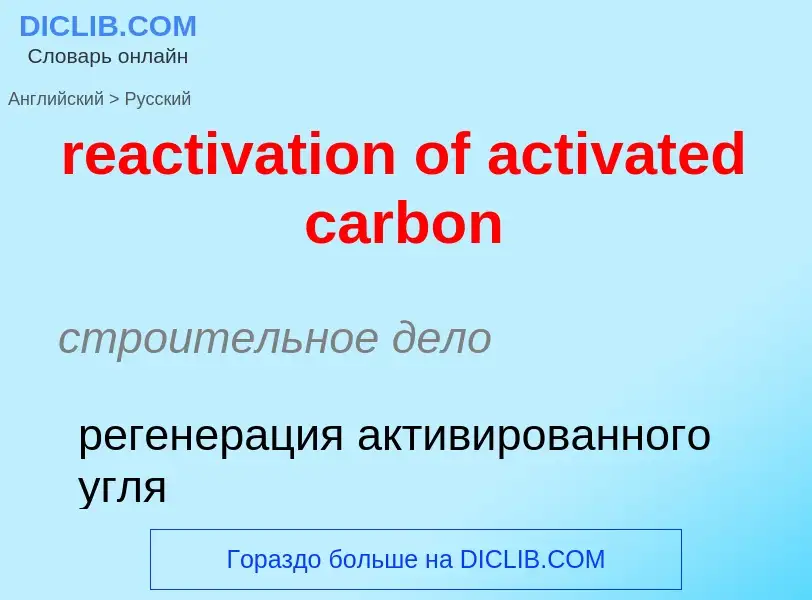Translation and analysis of words by ChatGPT artificial intelligence
On this page you can get a detailed analysis of a word or phrase, produced by the best artificial intelligence technology to date:
- how the word is used
- frequency of use
- it is used more often in oral or written speech
- word translation options
- usage examples (several phrases with translation)
- etymology
reactivation of activated carbon - translation to russian
строительное дело
регенерация активированного угля
Definition
.
Wikipedia

Activated carbon, also called activated charcoal, is a form of carbon commonly used to filter contaminants from water and air, among many other uses. It is processed (activated) to have small, low-volume pores that increase the surface area available for adsorption (which is not the same as absorption) or chemical reactions. Activation is analogous to making popcorn from dried corn kernels: popcorn is light, fluffy, and its kernels have a high surface-area-to-volume ratio. Activated is sometimes replaced by active.
Due to its high degree of microporosity, one gram of activated carbon has a surface area in excess of 3,000 m2 (32,000 sq ft) as determined by gas adsorption. Charcoal, before activation, has a specific surface area in the range of 2.0–5.0 m2/g. An activation level sufficient for useful application may be obtained solely from high surface area. Further chemical treatment often enhances adsorption properties.
Activated carbon is usually derived from waste products such as coconut husks; waste from paper mills has been studied as a source. These bulk sources are converted into charcoal before being 'activated'. When derived from coal it is referred to as activated coal. Activated coke is derived from coke.


![Activated carbon reactivation center in [[Roeselare]], Belgium. Activated carbon reactivation center in [[Roeselare]], Belgium.](https://commons.wikimedia.org/wiki/Special:FilePath/Activated-carbon-reactivation-centre-Roeselare.jpg?width=200)
![bright field]] illumination on a [[light microscope]]. Notice the [[fractal]]-like shape of the particles hinting at their enormous surface area. Each particle in this image, despite being only around 0.1 mm across, can have a surface area of several square centimeters. The entire image covers a region of approximately 1.1 by 0.7 mm, and the full resolution version is at a scale of 6.236 pixels/[[μm]]. bright field]] illumination on a [[light microscope]]. Notice the [[fractal]]-like shape of the particles hinting at their enormous surface area. Each particle in this image, despite being only around 0.1 mm across, can have a surface area of several square centimeters. The entire image covers a region of approximately 1.1 by 0.7 mm, and the full resolution version is at a scale of 6.236 pixels/[[μm]].](https://commons.wikimedia.org/wiki/Special:FilePath/ActivatedCharcoalPowder BrightField.jpg?width=200)
![A [[micrograph]] of activated charcoal '''(GAC)''' under [[scanning electron microscope]] A [[micrograph]] of activated charcoal '''(GAC)''' under [[scanning electron microscope]]](https://commons.wikimedia.org/wiki/Special:FilePath/Activated Charcoal.jpg?width=200)
![World's largest reactivation plant located in [[Feluy]], Belgium. World's largest reactivation plant located in [[Feluy]], Belgium.](https://commons.wikimedia.org/wiki/Special:FilePath/Reactivation Furnace Feluy Belgium.jpg?width=200)



